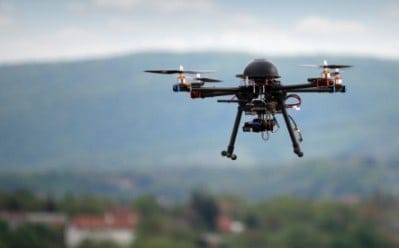 NEW YORK–Everyone understands the regulatory obligations of unmanned aerial vehicle operators because, in the words of one panelist here at Advisen’s Casualty Conference, “there aren’t any.”
NEW YORK–Everyone understands the regulatory obligations of unmanned aerial vehicle operators because, in the words of one panelist here at Advisen’s Casualty Conference, “there aren’t any.”
The comment by Justin Green, aviation attorney at Kreindler & Kreindler, drew some laughs but as the insurance industry begins to understand the casualty insurance implications of UAVs, or drones, it is very relevant. Oftentimes the industry looks to regulation to establish best practices or guidelines to help the underwriting process.
Commercial and hobbyist use of drones is “five years ahead of the [Federal Aviation Administration],” said Green. “They are trying to play catch-up while keeping control over it.”
Amazon recently criticized the FAA for being too slow to give the go-ahead for commercial drone testing. Amazon had received approval for some testing–indoors.
ALSO READ: Drones fly up, up and away into risky skies
Thomas Klaus, vice president at Willis Aerospace–Americas, explained the use of drones commercially has been realized and practiced in industries such as: photography and movie production, oil and gas, law enforcement and military, disaster recover, real estate, journalism, disaster recovery, and insurance.
“This is just the tip of the iceberg,” he said. The fact is, the industry is “still trying to find the best home” for many of the risks associated with UAVs, Klaus said.
From a plaintiff’s point of view, commercial UAV use in many cases is safer than helicopters–which might otherwise be used to perform a search-and-rescue or movie film shot, as examples.
“Typically no one cares if a drone crashes because it’s just lost money,” Green said. Granted, some UAVs are very expensive but it’s not a loss of life.
Property damage and bodily injury are some other insurance concerns and there have been some claims, explained Klaus. Privacy and cyber liability-type coverage may also be triggered as the UAV industry evolves over the next 5-10 years, Klaus said.
Green added an additional exposure surrounding regulation.
How about this for an additional exposure: Klaus said there have been quite a few “near misses” involving drones and manned aircraft carrying people.
Some insurers have begun attaching an endorsement to general liability policies to address UAV exposures specifically, said Klaus. Aviation policies contain some coverage but it is possible to get more limits with a GL policy.
There was no direct answer for an audience member who asked what coverage he needed for his son’s drone. Another broker said he’d received applications and asked the commercial client if they’d looked into getting FAA permits.
“They had no idea that was necessary,” he said.